Aquatic Invertebrates
Media
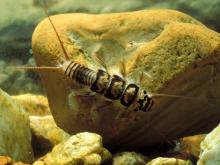
Species Types
Scientific Name
There are hundreds of species in North America
Description
Stonefly larvae are aquatic and somewhat resemble the larvae of mayflies and damselflies. Their presence usually indicates good water quality.
Media

Species Types
Scientific Name
Species in the suborder Zygoptera
Description
Damselfly larvae are narrow-bodied aquatic insects with large eyes, six thin legs, and three paddle-shaped, tail-like gills at the hind end.
Media

Species Types
Scientific Name
About 1,500 species in North America north of Mexico
Description
The aquatic larvae of caddisflies are famous for building portable, protective cases out of local materials, including grains of sand, bits of leaves and twigs, and other debris. The adults are mothlike.
Media

Species Types
Scientific Name
Tabanus, Chrysops, and related genera
Description
The larvae of horse and deer flies are fairly straight, segmented, wormlike maggots that are tan, whitish, or brownish. They are aquatic or live in mud, and most are predaceous.
Media

Species Types
Scientific Name
Corydalus cornutus
Description
Hellgrammites are the aquatic larval form of eastern dobsonflies. They are fiercely predaceous and look a little like centipedes. Anglers often use them as bait.
Media
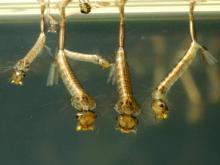
Species Types
Scientific Name
There are about 50 species of mosquitoes in our state.
Description
The larvae of mosquitoes, often called “wrigglers,” have a large head and thorax and a narrow, wormlike abdomen; they typically hang just below the water surface. When disturbed, they wriggle downward.
Media
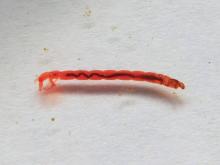
Species Types
Scientific Name
Nearly 1,100 species in North America
Description
Midge larvae look something like thin aquatic inchworms. They can be clear, whitish, olive, tan, or bright red. They occur in a variety of aquatic habitats. As adults, they resemble mosquitoes but they never bite.
Media
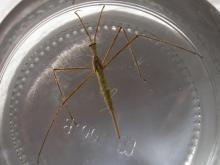
Species Types
Scientific Name
Ranatra spp. and Nepa apiculata
Description
Water scorpions remain still, looking like a random bit of plant material. Then they suddenly grab their prey and deliver disabling fluids with a quick jab of their knifelike beak.
Media
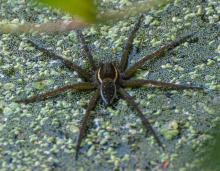
Species Types
Scientific Name
Dolomedes spp., Tetragnatha spp., and others
Description
A variety of spiders are adapted for live on and around water. Many of these are called fishing spiders. Several have the ability to run across the water’s surface. Some build webs, others do not.
Media
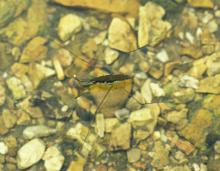
Species Types
Scientific Name
Aquarius remigis; also species in the genus Gerris
Description
Water striders are eye-catching. Water-repellant hairs on the hind and middle legs allow these nimble insects to skate on the surface of the water.
See Also
About Aquatic Invertebrates in Missouri
Missouri's streams, lakes, and other aquatic habitats hold thousands of kinds of invertebrates — worms, freshwater mussels, snails, crayfish, insects, and other animals without backbones. These creatures are vital links in the aquatic food chain, and their presence and numbers tell us a lot about water quality.





















